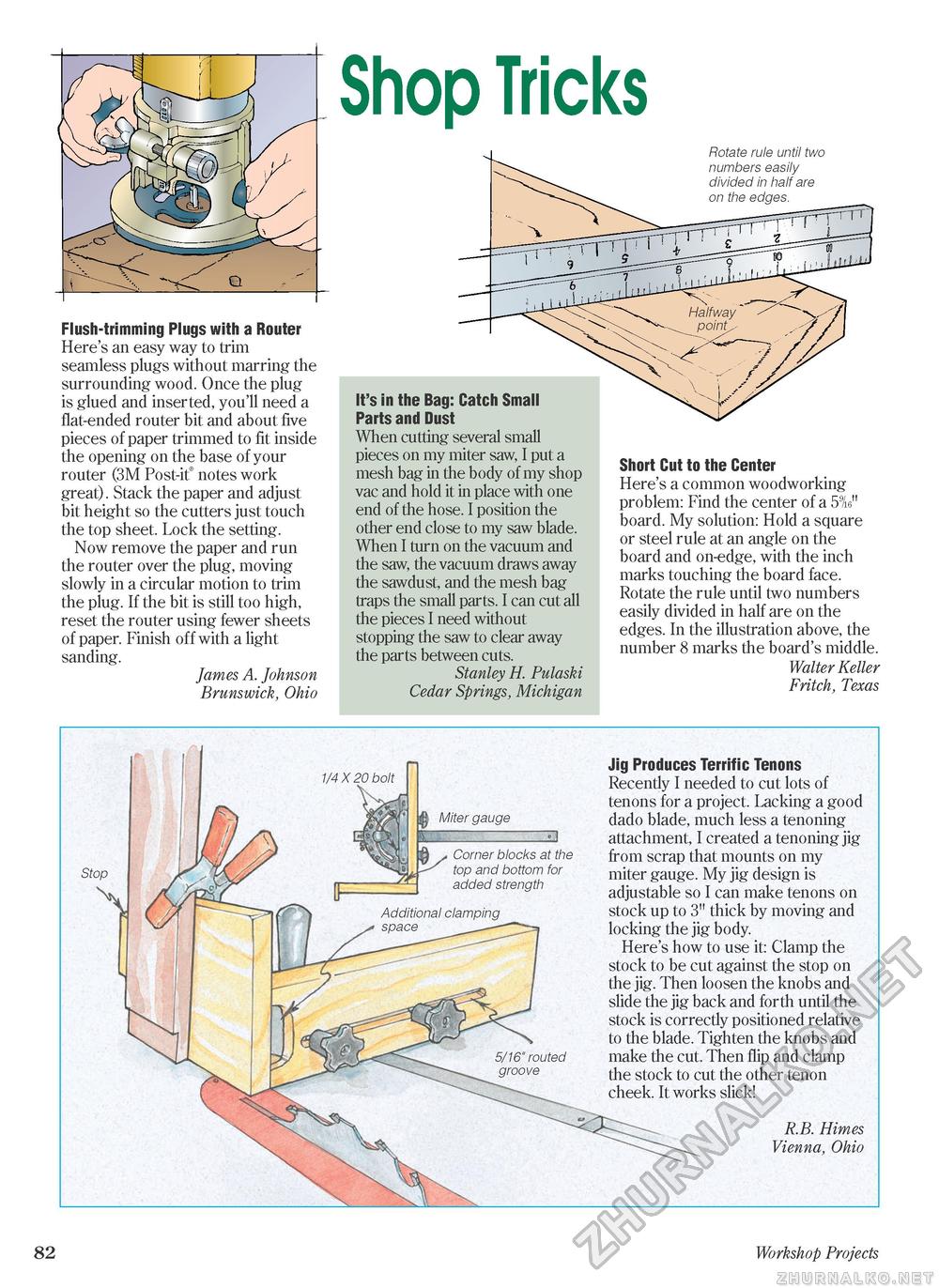Woodworker's Journal 2004-Winter, страница 79
Flush-trimming Plugs with a Router Here's an easy way to trim seamless plugs without marring the surrounding wood. Once the plug is glued and inserted, you'll need a flat-ended router bit and about five pieces of paper trimmed to fit inside the opening on the base of your router (3M Post-it® notes work great). Stack the paper and adjust bit height so the cutters just touch the top sheet. Lock the setting. Now remove the paper and run the router over the plug, moving slowly in a circular motion to trim the plug. If the bit is still too high, reset the router using fewer sheets of paper. Finish off with a light sanding. James A. Johnson Brunswick, Ohio Shop TricksIt's in the Bag: Catch Small Parts and Dust When cutting several small pieces on my miter saw, I put a mesh bag in the body of my shop vac and hold it in place with one end of the hose. I position the other end close to my saw blade. When I turn on the vacuum and the saw, the vacuum draws away the sawdust, and the mesh bag traps the small parts. I can cut all the pieces I need without stopping the saw to clear away the parts between cuts. Stanley H. Pulaski Cedar Springs, Michigan Rotate rule until two numbers easily divided in half are on the edges. Short Cut to the Center Here's a common woodworking problem: Find the center of a 5 V board. My solution: Hold a square or steel rule at an angle on the board and on-edge, with the inch marks touching the board face. Rotate the rule until two numbers easily divided in half are on the edges. In the illustration above, the number 8 marks the board's middle. Walter Keller Fritch, Texas Miter gauge Corner blocks at the top and bottom for added strength Jig Produces Terrific Tenons Recently I needed to cut lots of tenons for a project. Lacking a good dado blade, much less a tenoning attachment, I created a tenoning jig from scrap that mounts on my miter gauge. My jig design is adjustable so I can make tenons on stock up to 3" thick by moving and locking the jig body. Here's how to use it: Clamp the stock to be cut against the stop on the jig. Then loosen the knobs and slide the jig back and forth until the stock is correctly positioned relative to the blade. Tighten the knobs and make the cut. Then flip and clamp the stock to cut the other tenon cheek. It works slick! R.B. Himes Vienna, Ohio 82 * Workshop Projects |







